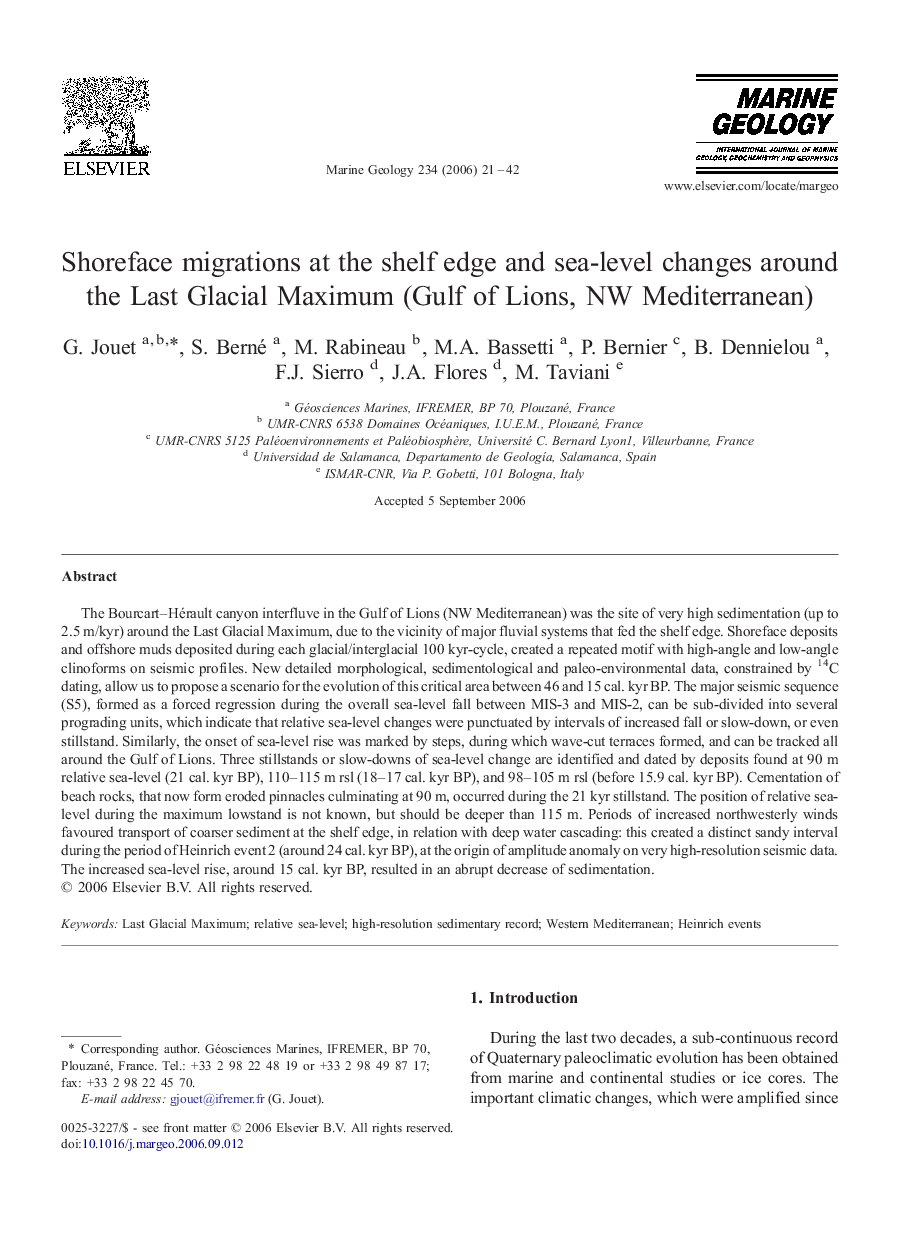| کد مقاله | کد نشریه | سال انتشار | مقاله انگلیسی | نسخه تمام متن |
|---|---|---|---|---|
| 4719577 | 1639204 | 2006 | 22 صفحه PDF | دانلود رایگان |

The Bourcart–Hérault canyon interfluve in the Gulf of Lions (NW Mediterranean) was the site of very high sedimentation (up to 2.5 m/kyr) around the Last Glacial Maximum, due to the vicinity of major fluvial systems that fed the shelf edge. Shoreface deposits and offshore muds deposited during each glacial/interglacial 100 kyr-cycle, created a repeated motif with high-angle and low-angle clinoforms on seismic profiles. New detailed morphological, sedimentological and paleo-environmental data, constrained by 14C dating, allow us to propose a scenario for the evolution of this critical area between 46 and 15 cal. kyr BP. The major seismic sequence (S5), formed as a forced regression during the overall sea-level fall between MIS-3 and MIS-2, can be sub-divided into several prograding units, which indicate that relative sea-level changes were punctuated by intervals of increased fall or slow-down, or even stillstand. Similarly, the onset of sea-level rise was marked by steps, during which wave-cut terraces formed, and can be tracked all around the Gulf of Lions. Three stillstands or slow-downs of sea-level change are identified and dated by deposits found at 90 m relative sea-level (21 cal. kyr BP), 110–115 m rsl (18–17 cal. kyr BP), and 98–105 m rsl (before 15.9 cal. kyr BP). Cementation of beach rocks, that now form eroded pinnacles culminating at 90 m, occurred during the 21 kyr stillstand. The position of relative sea-level during the maximum lowstand is not known, but should be deeper than 115 m. Periods of increased northwesterly winds favoured transport of coarser sediment at the shelf edge, in relation with deep water cascading: this created a distinct sandy interval during the period of Heinrich event 2 (around 24 cal. kyr BP), at the origin of amplitude anomaly on very high-resolution seismic data. The increased sea-level rise, around 15 cal. kyr BP, resulted in an abrupt decrease of sedimentation.
Journal: Marine Geology - Volume 234, Issues 1–4, 18 December 2006, Pages 21–42